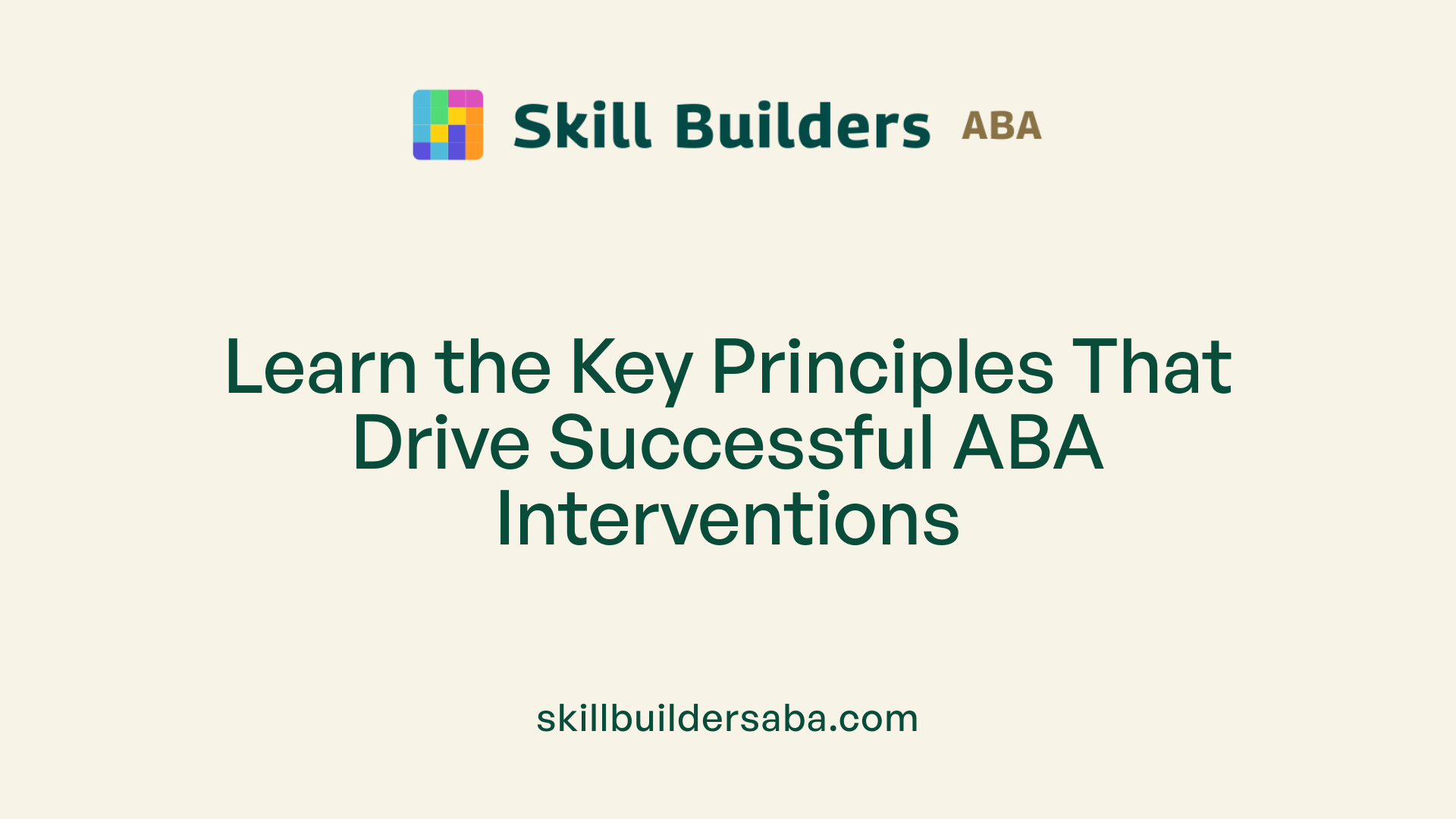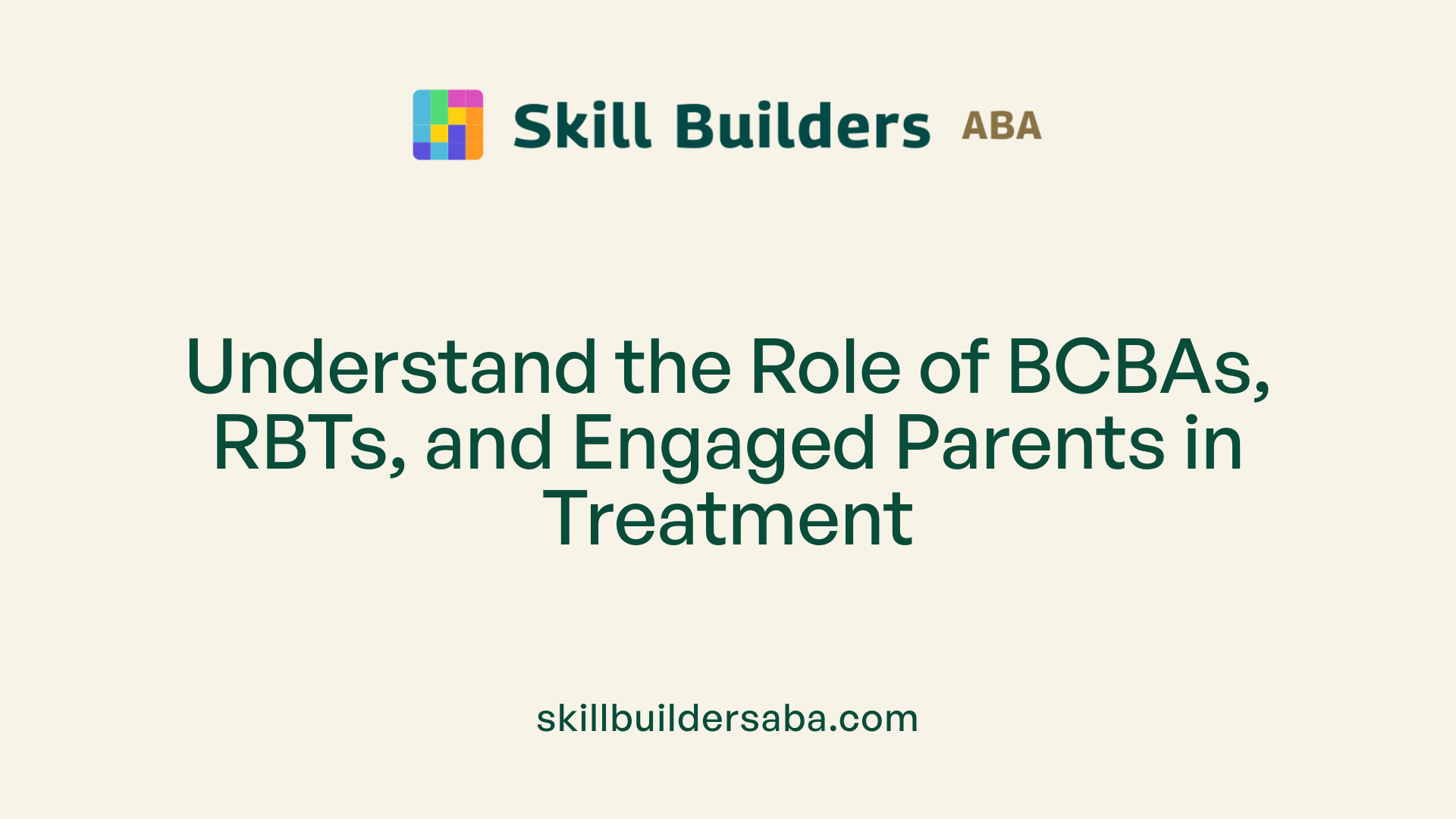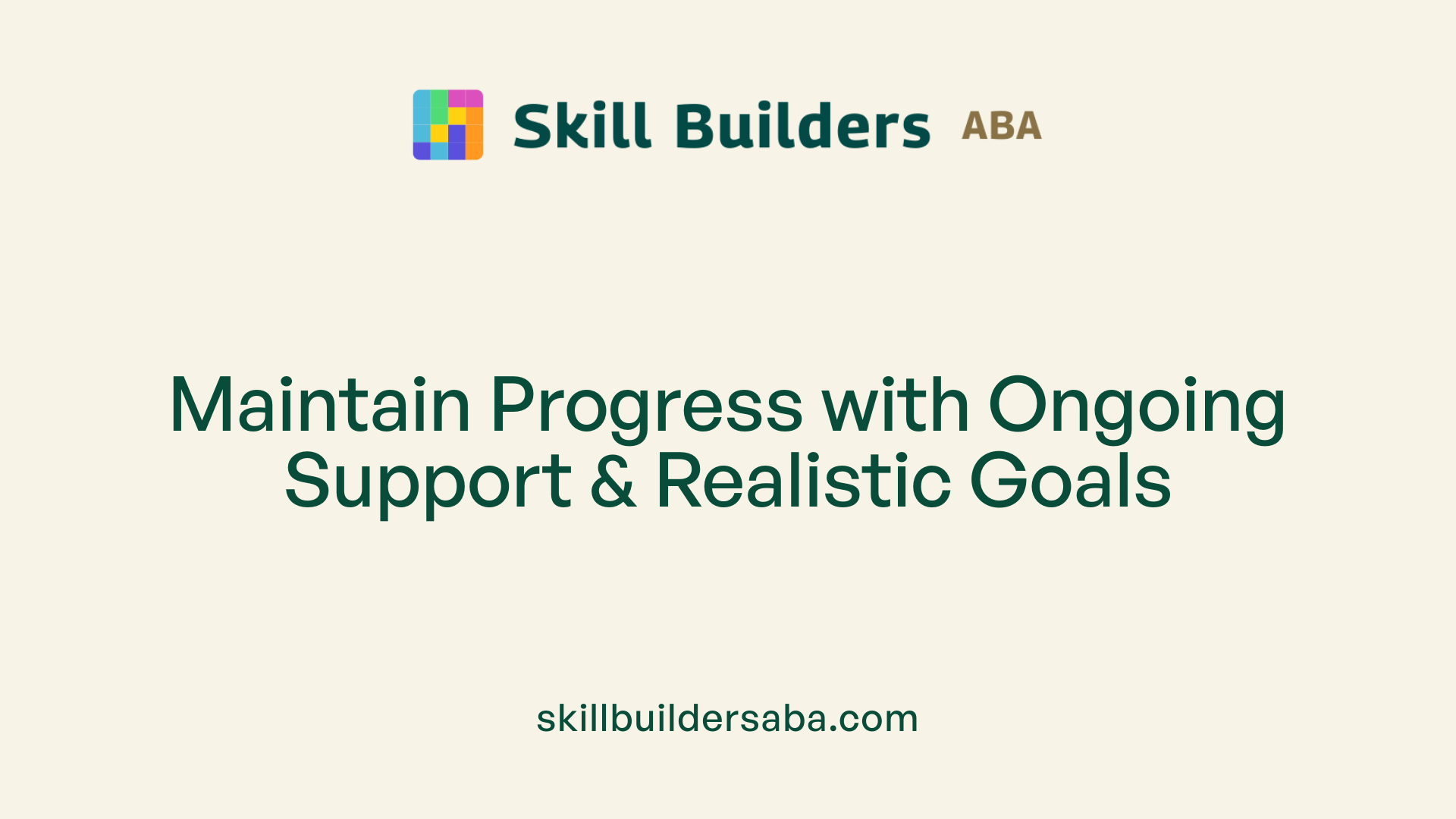
What to expect in parent training for ABA
Empowering Parents Through ABA: A Collaborative Path to Autism Therapy Success
Understanding Parent Training in ABA Therapy
Applied Behavior Analysis (ABA) therapy is widely recognized as an evidence-based approach to help children with autism spectrum disorder develop crucial skills and manage behaviors. Integral to the success of ABA therapy is parent involvement through behavioral parent training. This article explores what parents can expect from ABA parent training, highlighting its collaborative nature, practical techniques, and benefits for both the child and family.
The Foundations of ABA Therapy and Its Purpose

What is applied behavior analysis (ABA) therapy, and how is it used for autism?
Applied Behavior Analysis (ABA) therapy is a scientifically supported treatment grounded in the principles of learning and behavior. It is widely recognized as an effective, evidence-based approach for helping children with autism spectrum disorder (ASD) and other behavioral disorders.
ABA therapy aims to increase helpful behaviors—such as communication and social skills—while decreasing harmful or non-learning behaviors. By using methods like positive reinforcement and careful analysis of antecedents, behaviors, and consequences, ABA helps individuals develop important skills that improve their daily lives.
Common areas targeted by ABA
ABA therapy focuses on enhancing a variety of critical skills, including:
- Language and communication
- Attention and focus
- Social interaction and play skills
- Memory and academic achievement
- Daily living and self-care abilities
Each individual’s program is customized to address their unique strengths and challenges, ensuring that therapy is meaningful and practical.
Key principles and customization of ABA programs
Effective ABA programs are personalized and involve ongoing assessment with consistent data collection to evaluate progress and make necessary adjustments. Board-certified behavior analysts (BCBAs) design these programs and supervise trained therapists (Registered Behavior Technicians, RBTs) who deliver daily interventions.
The therapy blends structured techniques such as Discrete Trial Training with more naturalistic methods, adapting to the individual's learning style. This tailored approach helps promote independence, socialization, and overall quality of life across various environments.
Through collaboration with families and caregivers, ABA therapy ensures consistency in applying behavioral strategies at home and in the community, further supporting long-term success.
Who Provides ABA Therapy and Parent Training?

Qualifications and roles of ABA providers
ABA therapy services are typically provided by professionals with specialized training in behavior analysis. The primary providers include board-certified behavior analysts (BCBAs) and registered behavior technicians (RBTs).
BCBAs are highly trained individuals who design, supervise, and modify ABA treatment plans. They usually hold a master’s degree in applied behavior analysis or a related field and have completed extensive supervised fieldwork totaling around 2,000 hours. Certification by the Behavior Analyst Certification Board (BACB) is essential, which requires passing a comprehensive exam and adhering to ethical and professional standards.
RBTs are trained therapists who implement ABA interventions under the supervision of BCBAs. They complete specific training focusing on practical ABA techniques and work directly with clients to carry out treatment protocols.
Collaboration between BCBAs, RBTs, and parents
ABA therapy emphasizes a collaborative approach. BCBAs design individualized treatment plans and oversee progress, while RBTs deliver the therapy sessions. Parents play a vital role by participating in training to reinforce learned skills at home and in daily life.
Ongoing communication among BCBAs, RBTs, and parents is essential for consistent behavioral reinforcement across environments. This teamwork helps adapt strategies, monitor goals, and ensure the therapy is effective and tailored to the child's evolving needs.
Importance of provider credentials and supervision
It is crucial to choose ABA providers who are certified and adhere to proper supervision protocols. BCBAs must maintain their credentials through continuing education and ethical practice. When RBTs deliver therapy, they should work under the close supervision of a BCBA to ensure fidelity to treatment plans.
Parents are encouraged to inquire about a provider’s qualifications, certification status, and supervision practices. This helps ensure the quality and safety of therapy, fostering confidence in the intervention process and promoting the best outcomes for the child.
Core Techniques Parents Learn in ABA Training

What are the common methods and techniques used in ABA therapy?
ABA therapy employs several effective methods to promote positive behavior change. Common techniques include positive reinforcement, which rewards desirable behaviors to encourage their recurrence. Discrete Trial Training (DTT) and natural environment teaching help children learn skills step-by-step or in real-life settings. Behavior chaining breaks down complex tasks into smaller manageable steps.
Positive Reinforcement and Its Role
Positive reinforcement is central to ABA; it involves providing a motivational reward following a correct behavior, increasing the likelihood that the behavior will happen again. Parents learn to identify suitable reinforcers, such as praise or small treats, and consistently apply them to encourage helpful behaviors.
Use of Routines and Visual Supports
Consistency is crucial in ABA. Parents are taught to create and maintain consistent routines that provide structure and predictability for the child. Visual supports, like schedules, charts, and picture cues, help children understand expectations and transitions, reducing anxiety and improving compliance.
Role-Playing and Communication Strategies
Role-playing is used as a hands-on technique to teach social skills and appropriate responses. Parents practice these scenarios with their child, enhancing communication and interaction. Strategies also include using clear, simple language, visual supports, and reinforcing any attempts at communication to build confidence and competence.
Antecedent-Behavior-Consequence Framework
Parents learn to apply the ABC framework to understand and influence behavior: identifying the Antecedent (what happens before a behavior), the Behavior itself, and the Consequence (what follows). This approach helps in pinpointing triggers and implementing proactive strategies to reduce challenging behaviors while encouraging positive ones.
Through these core techniques, parents gain practical skills that allow them to support their child's development effectively beyond therapy sessions, fostering consistency and progress across home, school, and community settings.
The Role of Parents: Active Partners in Therapy

Collaboration and communication with therapists
Active collaboration between parents and ABA therapists is essential for successful treatment. Parents participate in sessions and learn the specific skills their child is taught. This partnership involves open dialogue, clear language, and the use of visual supports to reinforce communication. Such collaboration ensures that all members of the care team work toward shared goals and enables parents to effectively monitor their child's progress.
Consistency in application of ABA principles at home
Consistency is crucial for reinforcing positive behaviors and promoting skill generalization across environments. Parents trained in ABA strategies apply techniques such as positive reinforcement, maintaining consistent routines, visual schedules, and role-playing social skills in everyday settings. This consistent application helps extend learning beyond therapy sessions and supports the child's development in home, school, and community contexts.
Setting and tracking meaningful goals
Together with board-certified behavior analysts (BCBAs), parents help set small, realistic, and measurable goals tailored to their child's needs. These goals focus on increasing helpful behaviors and reducing challenges. Tracking progress and celebrating improvements can manage expectations and encourage continued engagement in the therapy process.
Empowerment through knowledge and skills
Parent training in ABA equips caregivers with practical, hands-on strategies and a solid understanding of behavioral principles. This knowledge empowers parents to actively participate and have a positive impact on their child's development, fostering independence, self-reliance, and stronger family dynamics. Being educated in ABA also helps parents manage challenging behaviors, reduce stress, and build a nurturing home environment.
Benefits of Parent Training in ABA Therapy

How does parent training improve understanding and confidence?
Parent training in ABA therapy equips parents with a clear understanding of behavioral principles and ABA techniques. This knowledge boosts their confidence to actively support their child's development. Through hands-on learning, parents grasp how to reinforce positive behaviors and implement strategies taught during therapy sessions.
In what ways does parent training help manage challenging behaviors?
Behavioral parent training teaches parents to identify triggers of challenging behaviors and respond calmly and effectively. This approach reduces stress and helps manage difficult situations at home. Parents learn practical tools such as positive reinforcement, consistent routines, and visual supports to maintain a calm and structured environment.
How can parent training strengthen the parent-child relationship?
Training fosters stronger relationships by encouraging collaboration and mutual understanding between parents and children. Setting clear, individualized goals helps parents better comprehend their child's needs and progress. This tailored approach promotes a nurturing family dynamic and enhances communication.
What role does parent training play in promoting child independence and skill generalization?
Parents learn to extend ABA techniques beyond therapy by applying them consistently at home, school, and in the community. This consistency supports the generalization of skills and encourages children to become more independent and self-reliant in daily activities.
BenefitDescriptionImpact on FamilyImproved UnderstandingParents learn ABA principles and techniquesIncreased confidence and active involvementManaging Challenging BehaviorsTools to identify triggers and respond calmlyReduced family stress and more effective behavior managementStronger RelationshipsCollaborative goal setting and tailored strategiesEnhanced communication and nurturing environmentChild Independenceconsistent application of ABA techniques across settingsGreater skill generalization and child self-relianceAddressing Common Misconceptions about ABA

What are some common misconceptions about ABA therapy?
Applied Behavior Analysis (ABA) is often misunderstood in several ways. A frequent myth is that ABA is a punitive or overly rigid treatment. In reality, ABA is a positive, flexible, and individualized approach that focuses heavily on reinforcement of helpful behaviors rather than punishment. It is designed to increase skills like communication, social interaction, and independence, not just to reduce problematic behaviors.
Another misconception is that ABA is a one-size-fits-all method applied uniformly to every individual. Effective ABA programs are carefully tailored to each person's unique needs and abilities. This customization ensures that therapy goals are meaningful and achievable, supported by ongoing assessment and data collection.
People also sometimes think that ABA is only for young children, but this approach benefits individuals across all ages, including teens and adults. Modern ABA therapy includes play, natural routines, and emotional understanding, making it a supportive learning experience in everyday environments.
Lastly, ABA is mistakenly viewed as repetitive drills or punishment-based. Here, the science-based techniques focus on positive reinforcement, role-playing, and collaboration with families. In fact, ABA therapy emphasizes family involvement, making it a family-centered process to support meaningful growth at home and beyond.
Supporting Families: Managing Challenges and Sustaining Progress

Recognizing and Managing Stress and Burnout
Families involved in ABA therapy often face significant stress and risk of burnout. Recognizing these feelings early is crucial. Effective ABA parent training provides parents with strategies to manage stress, such as maintaining calm responses during challenging behaviors and implementing self-care routines. These approaches help foster a positive family environment.
Handling Behavioral Challenges Calmly
Parents learn to identify triggers for challenging behaviors and respond calmly, which reduces escalation and supports consistent behavior management. Training emphasizes understanding behavioral antecedents and consequences, enabling parents to effectively apply reinforcement techniques and maintain composed interventions during difficult moments.
Using Realistic Goal-Setting and Celebrating Progress
Setting small, measurable, and achievable goals helps families maintain motivation and track their child's improvements. Celebrating these successes reinforces positive behaviors and encourages continued effort from both children and parents. Collaborative goal setting with BCBAs ensures that expectations are clear and progress is observable.
Ensuring Ongoing Training and Support for Families
Sustaining progress requires ongoing parent education and support. ABA providers collaborate with families to deliver practical, hands-on training that parents can implement at home, school, and in the community. Continuous communication and refresher sessions are vital in reinforcing ABA principles, promoting consistency across environments, and empowering parents to actively support their child’s development.
A Collaborative Journey to Support Children and Families
Parent training in ABA is more than a supplementary element—it is a cornerstone of effective therapy. By equipping parents with understanding, skills, and collaborative tools, ABA parent training fosters consistent reinforcement and holistic support for children with autism. This active involvement not only enhances treatment outcomes but also builds stronger family dynamics and empowers parents to become confident advocates for their children’s growth and independence. As families and therapists work together, the path toward meaningful progress becomes increasingly achievable and sustainable.
References
- Applied Behavior Analysis (ABA)
- Behavioral Parent Training: Important Tips and Strategies
- The Role Parents Play in ABA Therapy | A Simple Guide
- Parent Involvement in ABA Therapy
- The Ultimate Guide to Parent Training in ABA
- 10 Common Misconceptions About ABA
- Myths & Facts About Applied Behavior Analysis
- 8 Common Myths About ABA Therapy Debunked
Information When You Need It
To see if Skill Builders ABA is the right fit, you can read about our approach and values online. If you would rather talk through the logistics with a coordinator, drop us a line and we’ll get back to you.
Reach Out Today
Learn more about how we can support your child’s growth and development. Contact us to discuss our services and availability in your area.
.svg)